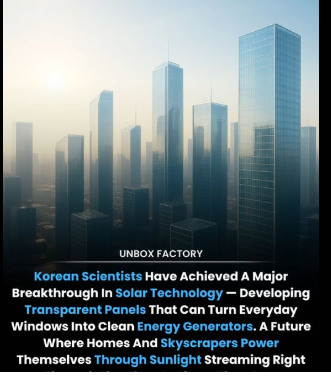Harnessing the Earth’s Heat: Geothermal Power Plants Lighting Up Oceania
Nestled amidst the stunning islands of Oceania, a silent revolution is brewing beneath the surface.
Geothermal energy, the natural heat radiating from the Earth’s core, is being harnessed by a growing number of power plants, providing clean and sustainable electricity to this diverse region.
From the volcanic peaks of New Zealand to the tropical shores of Fiji, geothermal plants are tapping into this abundant renewable resource, offering a promising alternative to fossil fuels. This article delves into the current state of geothermal power in Oceania, exploring its potential and the challenges it faces.
Leaders in the Field:
New Zealand stands as a pioneer in geothermal energy utilization. With over 800 MW of installed capacity, it ranks among the top 10 geothermal producers globally. Iconic plants like Wairakei, the world’s first commercial geothermal power station, and Kawerau, boasting the largest single unit in the world, have been powering homes and industries for decades.
Across the Tasman Sea, Australia is slowly but surely making its mark. The 420 MW Darling Range Geothermal Power Station in Western Australia serves as a testament to the country’s commitment to clean energy. Meanwhile, smaller plants in South Australia and Queensland showcase the versatility of geothermal technology for distributed generation.
Island Nations Embrace Geothermal:
The tropical islands of the Pacific Ocean, blessed with volcanic activity, are increasingly turning to geothermal energy for their energy needs. Papua New Guinea boasts the 100 MW Ramu Power Station, providing crucial electricity to a country heavily reliant on imports. In Fiji, the Nadi Thermal Power Station showcases a hybrid approach, combining geothermal steam with diesel fuel to meet the island nation’s growing demand.
Beyond these larger installations, smaller-scale geothermal projects are emerging across the region. From Vanuatu’s 1.5 MW Takaro Power Station providing power to remote villages to the planned 5 MW Blackrock project in Tonga, geothermal energy is democratizing access to clean electricity, particularly in areas where grid connection is unreliable.
Challenges and Opportunities:
Despite its immense potential, geothermal development in Oceania faces hurdles. High upfront investment costs and the technical complexity of exploration and drilling can deter investors. Additionally, public concerns about environmental impact, such as noise and potential seismic activity, need to be carefully addressed.
However, the benefits of geothermal energy are undeniable. It offers a clean and reliable source of power, independent of fluctuating fossil fuel prices. Furthermore, it creates jobs, boosts local economies, and reduces greenhouse gas emissions, contributing to the fight against climate change.
A Brighter Future Ahead:
With advancements in technology and increasing awareness of the environmental benefits, the future of geothermal power in Oceania appears bright. Governments are implementing supportive policies, research and development efforts are intensifying, and private sector investment is growing.
Oceania strives for a sustainable future, harnessing the Earth’s geothermal energy presents a compelling opportunity. By overcoming the challenges and capitalizing on the immense potential, the region can illuminate its communities with clean, reliable power for generations to come.
Table of The Oceania Geothermal Power Plant Installed by Country
Oceania Geothermal Power Plant Installed by Country (as of January 2024)
| Country | Installed Capacity (MW) | Largest Plant | Notable Plants |
|---|---|---|---|
| New Zealand | 818 | Kawerau (250 MW) | Wairakei, Rotokawa, Tauhara, Te Pukeka |
| Australia | 597 | Darling Range (420 MW) | Paralana, Derby, Wilson’s Creek, Geodynamics |
| Papua New Guinea | 100 | Ramu | None |
| Fiji | 56 | Nadi Thermal (hybrid) | None |
| Vanuatu | 1.5 | Takaro | None |
| Tonga | (Planned) 5 | Blackrock | None |
| Samoa | (Planned) 5 | Nafanua | None |
Total Installed Capacity in Oceania: ~1,578 MW
Notes:
- This table includes only operational geothermal power plants.
- Installed capacity refers to the maximum electricity output of the plant.
- Some countries, such as Samoa and Tonga, have geothermal projects in the planning or development stage. These are included in the table with planned capacity.
Additional Information:
- This table represents a snapshot of the current landscape and is subject to change as new plants are built or existing ones are upgraded.
- More detailed information about individual geothermal plants can be found on the websites of energy companies and government agencies.
https://www.exaputra.com/2024/01/the-oceania-geothermal-power-plant.html
Renewable Energy
Educating for Peace
 What this really means is teaching kids that:
What this really means is teaching kids that:
All human beings, rich or poor, black or white, gay or straight, have equal value.
The people who have had the privilege to see the Earth from space are uniformly shocked, usually moved to tears, to see that all the lines and boundaries that define our geopolitical world do not really exist; they are constructs of the uber-wealthy who profit from division and war.
I would love to see Maria Montessori’s dream come true. Yet, as a realist, living in the United States, I see the enormity of the challenge we face here.
Renewable Energy
Did January 6th Really Happen, or Was it a Hoax, as Trump Wants You to Believe?
 If I had told you ten years ago that one man would rise to power in the United States who would have such a command over the American people that he could make up any lie he wanted to — and it would be broadly recognized as true — would you have believed me?
If I had told you ten years ago that one man would rise to power in the United States who would have such a command over the American people that he could make up any lie he wanted to — and it would be broadly recognized as true — would you have believed me?
Anyone would have bet $100 against a dime that this was impossible. Yet here we are, in a land where Trump can literally rewrite history, just by opening his mouth.
Did January 6th Really Happen, or Was it a Hoax, as Trump Wants You to Believe?
Renewable Energy
Transparent Solar PV
 This is theoretically possible; it transmits visible light and uses other frequencies (ultra-violet and infrared) to knock electrons out of the substrate. But it means higher costs and lower efficiencies. Of zero practical value at this point.
This is theoretically possible; it transmits visible light and uses other frequencies (ultra-violet and infrared) to knock electrons out of the substrate. But it means higher costs and lower efficiencies. Of zero practical value at this point.
-
Climate Change2 years ago
Spanish-language misinformation on renewable energy spreads online, report shows
-
Climate Change3 months ago
Guest post: Why China is still building new coal – and when it might stop
-
Climate Change Videos2 years ago
The toxic gas flares fuelling Nigeria’s climate change – BBC News
-

 Greenhouse Gases1 year ago
Greenhouse Gases1 year ago嘉宾来稿:满足中国增长的用电需求 光伏加储能“比新建煤电更实惠”
-
Greenhouse Gases3 months ago
Guest post: Why China is still building new coal – and when it might stop
-

 Climate Change1 year ago
Climate Change1 year ago嘉宾来稿:满足中国增长的用电需求 光伏加储能“比新建煤电更实惠”
-

 Carbon Footprint2 years ago
Carbon Footprint2 years agoUS SEC’s Climate Disclosure Rules Spur Renewed Interest in Carbon Credits
-
Renewable Energy4 months ago
US Grid Strain, Possible Allete Sale













